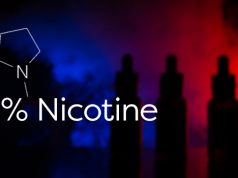In the lead up to the European elections which took place earlier this month, international health experts urged MEP candidates and policymakers to emulate and adopt Sweden’s successful tobacco harm reduction (THR) strategy. This call to action coincided with the revision of the Tobacco Products Directive, presenting a historic chance to implement life-saving changes for smokers across the EU. The European Parliament’s 2023 report on non-communicable diseases recognized the role of products like e-cigarettes in smoking cessation. Integrating this recommendation into policy actions could potentially save nearly 3 million smokers in Europe.
Sweden has emerged as a leader in THR. Despite similar nicotine consumption levels compared to other European countries, Sweden boasts a 21% lower tobacco-related death rate and a 36% lower lung cancer death rate. This success is attributed to the widespread availability of less harmful nicotine alternatives such as e-cigarettes and snus. In contrast, some European countries, like Belgium and the Netherlands, are considering bans on these safer alternatives, including nicotine pouches and flavoured vaping products.
An EU paper indicates the growing support for flavour bans
Sadly, a new document circulated to EU health ministers, indicates that a number of EU governments have endorsed a call for banning flavours in all nicotine products. Titled “Strengthening efforts to protect children from direct marketing and sale of tobacco and nicotine products, especially on digital platforms,” the paper has the support of France, Germany, Poland, Spain, the Netherlands, and seven other EU Member States. This document was discussed under “any other business” during the EU Health Ministers meeting, known as EPSCO, on Friday, during which, several EU Health Ministers advocated for flavour bans.
One aspect of the paper that everyone is likely to be in agreement on, is the emphasis on the responsibility of social media providers in regulating the marketing and sale of tobacco and nicotine products targeting minors. On the other hand, the paper’s recommendations to set bans and restrictions on safer nicotine alternative products will undoubtedly create conflict within the European Parliament. The new Parliament has not only as previously mentioned, voiced its support for vaping as a smoking cessation aid, but is also (due to more right and center-right MEPs), more inclined towards THR than in the past.
Director of the World Vapers Alliance Michael Landl, criticized the proposed flavour ban, arguing that it jeopardizes lives by ignoring the benefits of safer nicotine alternatives and the public’s preference. He emphasized the need to heed scientific evidence and public opinion, adding that this proposed policy would undermine public health and dismiss the voices of over 54,000 citizens who have signed a petition opposing it.
Moreover, during the same EPSCO meeting, EU health ministers were faced with the challenge of having to address a last-minute motion from the Danish Health Minister which proposed the established checks which characterize the current passing of tobacco and nicotine product regulations. The proposal threatens to bypass these steps which actually ensure thorough law-making within the EU.
Another day, another country plots for more of what is failing
Swedish MEP Charlie Weimers raised concerns on the proposal, noting that Denmark is planning a ban on flavoured nicotine products, including nicotine pouches, which could preempt the ongoing revision of the Tobacco Products Directive (TPD 2). Hence, the Danish proposal risks bypassing the steps required for such significant policy changes, and the potential consequences for local smoking rates would be significant.
To add insult to injury, the Commission’s Directorate-General for Health and Food Safety (DG SANTE) appears to support the Danish request, which has raised alarms due to Denmark’s poor record in reducing smoking rates, when compared to neighbouring Sweden. THR experts have long emphasized the need for evidence-based policies. They warn that rushed regulations could inadvertently drive people back to smoking or fuel the black market. These patterns of consumption behaviour are in fact witnessed in countries with harsh restrictions or bans in place.








